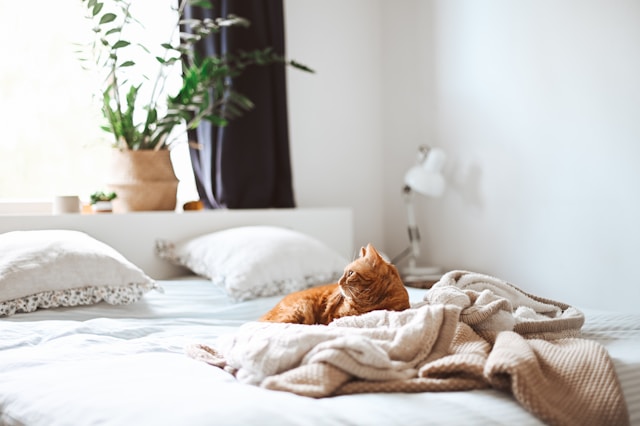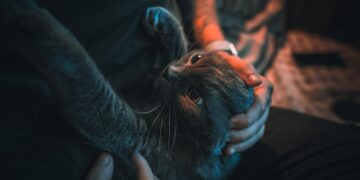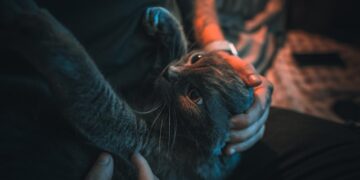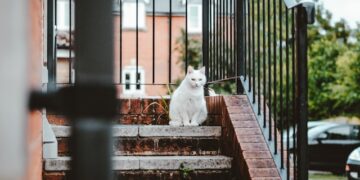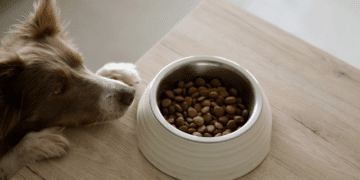Bringing a new pet home is an exciting experience, but it also comes with responsibilities. Just like child-proofing a home, pet-proofing is essential to keep your furry, feathered, or scaly friend safe. Many household items can pose dangers to pets, from electrical cords to toxic plants. This guide will help new pet owners create a safe and pet-friendly environment, reducing the risk of accidents and health hazards.
General Pet-Proofing Tips
Before diving into specific areas of your home, there are general safety precautions that every pet owner should take.
- Secure Loose Wires and Cords: Pets love to chew, and exposed electrical cords can lead to electrocution. Use cord covers or hide wires behind furniture.
- Remove Toxic Plants: Some common houseplants, like lilies, pothos, and aloe vera, can be toxic to pets if ingested. Research pet-safe alternatives.
- Store Small Objects Safely: Items like coins, buttons, jewelry, and rubber bands can be choking hazards. Keep them in drawers or containers.
- Use Pet-Safe Cleaning Products: Many household cleaners contain chemicals that are harmful to pets. Look for pet-friendly, non-toxic alternatives.
Room-by-Room Safety Guide
Different rooms in your home have different risks for pets. Here’s how to pet-proof each area effectively.
Living Room
- Secure heavy furniture and decor to prevent accidental tipping.
- Keep candles, incense, and fireplaces out of your pet’s reach to avoid burns.
- Store remote controls and batteries in safe places since they contain toxic materials.
Kitchen
- Keep food out of reach, especially toxic foods for pets like chocolate, grapes, onions, and xylitol.
- Secure trash bins with lids to prevent pets from rummaging through leftovers.
- Store cleaning supplies and dishwashing pods in cabinets with child-proof locks.
Bathroom & Laundry Room
- Close toilet lids to prevent small pets from falling in or drinking contaminated water.
- Store medications and personal care products (like lotions and shampoos) in locked cabinets.
- Keep laundry detergents, fabric softeners, and dryer sheets away from pets, as they contain harmful chemicals.
Bedroom
- Keep small objects like hair ties, earrings, and sewing needles stored securely.
- Ensure electrical cords from lamps and chargers are out of reach.
- Avoid leaving open containers of perfume, essential oils, or lotions where pets can lick them.
Garage & Outdoor Spaces
- Store antifreeze, motor oil, and other automotive products in sealed cabinets antifreeze is highly toxic to pets.
- Be cautious with fertilizers, pesticides, and mulch in the yard, as they can be dangerous if ingested.
- Secure fences and gates to prevent escape attempts, especially for dogs.
Pet-Specific Safety Tips
Each type of pet has unique needs and safety concerns. Here’s how to pet-proof based on the type of animal you have.
For Dogs
- Choose safe chew toys to prevent choking or intestinal blockages.
- Keep trash bins secure to stop them from ingesting harmful leftovers.
- Avoid toxic foods like grapes, garlic, caffeine, and artificial sweeteners.
For Cats
- Keep fragile decor and breakable items out of reach.
- Secure window screens and balcony railings to prevent falls.
- Provide scratching posts to discourage furniture destruction.
For Small Pets (Rabbits, Guinea Pigs, Hamsters)
- Use chew-proof enclosures to prevent escape and wire damage.
- Avoid exposing small pets to extreme temperatures or drafts.
- Keep them away from electrical cords, as they love to chew.
For Birds
- Avoid using non-stick cookware, as the fumes from Teflon-coated pans can be deadly to birds.
- Keep windows and mirrors covered or marked to prevent flying accidents.
- Ensure proper cage placement, away from direct sunlight and drafts.
Preventing Common Household Hazards
Even in a pet-proofed home, some common hazards require extra attention.
Poisonous Foods and Plants
Many human foods and houseplants are dangerous for pets. Always research pet-safe options before introducing new plants or foods.
Open Windows and Balconies
Pets can be curious, and open windows or unsecured balconies pose falling risks. Use pet screens or barriers for added security.
Furniture and Tight Spaces
Check under couches, beds, and cabinets for small spaces where pets can get stuck. Block off dangerous gaps with furniture stoppers.
Household Chemicals and Medications
Store all chemicals, detergents, and medications in high cabinets or locked storage areas. Even a small amount of certain chemicals can be lethal to pets.
Creating a Pet-Friendly Environment
Pet-proofing isn’t just about safety—it’s also about making your home comfortable for your new companion.
- Provide a designated pet area with a cozy bed and toys.
- Use pet gates to limit access to certain areas when unsupervised.
- Keep food and water bowls in an easy-to-access but low-traffic area.
- Train pets early on to follow house rules and discourage destructive behavior.
Conclusion
Bringing a new pet home is an exciting journey, but safety should always be a priority. By securing hazardous items, using pet-friendly products, and providing a comfortable space, you can create a safe and happy environment for your furry, feathered, or scaly friend.

